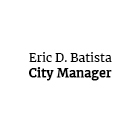Collapse Safety Information
For Immediate Release:
2/20/2015 11:37 am
Worcester, MA (February 20, 2015) - The prolonged cold weather and repeated snowstorms Massachusetts is experiencing have contributed to potentially dangerous conditions for businesses and homes alike. Heavy mounds of snow are creating severe roof load conditions. The Massachusetts Emergency Management Agency (MEMA) has received reports of over 100 full and partial roof collapses over the last week. Additionally the Department of Fire Services (DFS) has received numerous reports of gas leaks and fires caused by snow and icicles falling on gas piping and meters.
With the potential for more snow and/or rain in the forecast, residents and businesses are strongly encouraged to have snow and ice cleared from roofs before this weekend's storm, which could exacerbate the risk of roof and/or structural failure.
Homeowners, tenants and businesses should be cognizant of the danger posed by heavy snow loads on roofs, and the importance of recognizing the warning signs of potential structural weaknesses. In many instances, the risks posed by accumulated snow can be mitigated by safely removing snow from roofs. Flat and low pitched roofs, most often found on industrial buildings, but also used in certain home designs, are at the greatest risk of buckling under heavy snow and ice accumulations.
To safely remove snow from roofs, the Massachusetts Department of Public Safety (DPS), DFS and MEMA recommend the following tips:
DO
- Use a snow rake for pitched roofs (available at most hardware stores) to remove snow from your roof.
- Start from the edge and work your way into the roof.
- Try to shave the snow down to 2 or 3 inches on the roof instead of scraping the roof clean, which will risk damage to your shingles or other roof covering.
- Keep all ladders, shovels and roof rakes away from utility wires.
- Plastic shovels are usually best. Metal tools may cause damage to your roof.
- Shovel snow from flat roofs throwing the snow over the side, away from the building.
- Remove large icicles carefully if they're hanging over doorways and walkways. Consider knocking down icicles through windows using a broom stick.
- Protect utilities meters and piping from falling snow, icicles and melting water.
- Wear protective headgear and goggles when performing any of these tasks.
- Consider hiring professionals to do the job. The combination of heights plus ice makes this one of the more dangerous house chores. If you choose to do the task yourself, have someone outside with you to assist.
- Keep gutters and drains clean, free of ice and snow and keep downspouts clean at ground level.
DON'T
- Unless approved by a registered professional engineer, don't add your weight or the weight of equipment to the roof.
- Don't use a ladder since ice tends to build up on both the rungs of the ladder and the soles of your boots.
- Don't use blow torches, open-flame or electric heating devices like hair dryers or heat guns to remove snow and ice.
- Don't try to remove ice or icicles from utility wires or meters. Call your utility company for assistance.
How to Recognize Problems with Roofs:
- Sagging roofs
- Severe roof leaks
- Cracked or split wood members
- Bends or ripples in supports
- Cracks in walls or masonry
- Sheared off screws from steel frames
- Sprinkler heads that have dropped down below ceiling tiles
- Doors that pop open
- Doors or windows that are difficult to open
- Bowed utility pipes or conduit attached at ceiling
- Creaking, cracking or popping sounds
What to Do if You Have Problems:
- If you notice any signs that you have a problem with your roof, or suspect a gas leak, leave the building immediately without touching light switches and call 911 from safely outside the building.
- For general questions, call your local building or fire department business line.
Other Safety Tips for Homeowners:
- Clear snow away from furnace and dryer exhaust vents to prevent carbon monoxide poisoning. Make sure you have working smoke and carbon monoxide alarms on every level of your home.
- Clear snow from fire hydrants near your home or business.
- Clear snow from storm drains near your home or business to prevent street flooding.
To receive emergency information on your smartphone, including severe weather alerts from the National Weather Service and emergency information from MEMA, download the Massachusetts Alerts free app. To learn more about Massachusetts Alerts, and for additional information on how to download the free app onto your smartphone, visit: www.mass.gov/mema/mobileapp.


